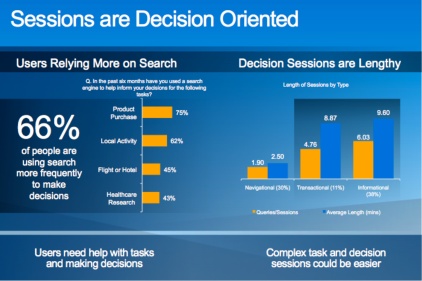Search Becoming More Personalized and User-Influenced
Personalization efforts have been underway at the search engines for some time. As we discussed in Chapter 2, the most basic form of personalization is to perform a reverse IP lookup to determine where the searcher is located, and tweak the results based on the searcher’s location. However, the search engines continue to explore additional ways to expand on this simple concept to deliver better results for each user. It is not yet clear whether personalization has given the engines that have invested in it heavily (namely Google) better results overall or greater user satisfaction, but their continued use of the technology suggests that, at the least, their internal user satisfaction tests have been positive.
Determining User Intent
The success of Internet search has always relied (and will continue to rely) on search engines’ abilities to identify searcher intent. Microsoft has branded Bing.com, its latest search project, not as a search engine but as a “decision” engine. It chose this label because of what it found in its research and analysis of search sessions. The slide shown in Figure 13-4 was presented by Satya Nadella at the Microsoft Search Summit 2009 in June 2009.

Figure 13-4. Microsoft analysis of search sessions
The conclusion was that about two-thirds of searchers frequently use search to make decisions. Microsoft also ...
Get The Art of SEO now with the O’Reilly learning platform.
O’Reilly members experience books, live events, courses curated by job role, and more from O’Reilly and nearly 200 top publishers.

